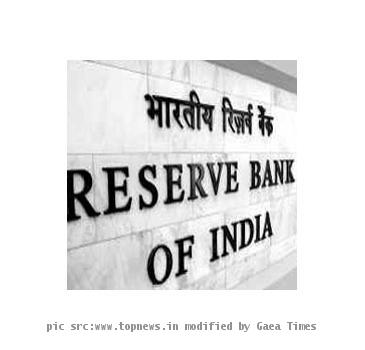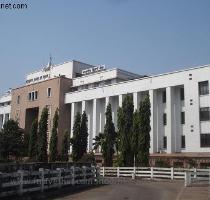First Quarter Review of Monetary Policy 2010-11: Press Statement by Dr. D. Subbarao, Governor
By RBITuesday, July 27, 2010
|
"This morning, the Reserve Bank released the First Quarter Review of Monetary Policy for 2010-11 at a meeting of the chief executives of major banks. The important decisions contained in the review were to raise the repo rate from 5.5 per cent to 5.75 per cent and the reverse repo rate from 4 per cent to 4.50 per cent. This asymmetric raise in rates narrows the LAF corridor from 150 basis points to 125 basis points. Balance of Policy Stance 2. The dominant concern that has shaped the monetary policy stance in this review is high inflation. Even as food price inflation and, more generally, consumer price inflation, have shown some moderation, they are still in double digits. Non-food inflation has risen, and demand side pressures are clearly evident. With growth taking firm hold, the balance of policy stance has to shift decisively to containing inflation and anchoring inflationary expectations. Global Outlook 3. Since our last policy review in April, the macroeconomic environment has changed significantly. In the aftermath of the Greek sovereign debt crisis and other visible soft spots in Europe and the US, there is renewed uncertainty about the sustainability of the recovery. In contrast, EMEs are witnessing strong growth, driven by rising domestic demand, restocking of inventories and, thus far, recovering global trade. The relatively rapid recovery in EMEs has also been accompanied by higher inflation. Overall, though, there is widespread expectation of a slowdown of the global economy in the second half of 2010. Indian Economy Growth 4. The macroeconomic developments in India are contrarian to the global trend. We have recovered faster, but our inflation rate has also been higher. The recovery process has consolidated and become more broad-based since April 2010. A big ‘known unknown’ in April 2010 was the outlook on monsoon. That has since become a ‘known known’ in the sense that rainfall so far has been better than during last year, and the crop-wise area sown and the distribution of rainfall offer scope for cautious optimism on the agricultural front. 5. Better farm sector prospects should lead to a pick-up in rural demand. This should give further momentum to the performance of the industrial sector which has been growing firmly. The strength of the recovery is also reflected in the sales and profitability growth of the corporate sector with more investment intentions being translated into action across a range of sectors. While domestic drivers of growth are robust, any slowdown in the global recovery will affect all EMEs, including India. 6. Taking into account the above factors, the projection for real GDP growth for 2010-11 is revised to 8.5 per cent, up from our April policy projection of 8.0 per cent with an upside bias. This upward revision is primarily based on better industrial production and its favourable impact on the services sector while giving due consideration to the global scenario. Inflation 7. The developments on the inflation front are, however, worrisome. Let me explain. WPI inflation has been in double digits since February 2010. Primary food articles inflation, despite some moderation, continues to be in double digits. Between November 2009 and June 2010, non-food inflation rose from zero to 10.6 per cent and non-food manufactured inflation from zero to 7.3 per cent. Significantly, non-food items contributed over 70 per cent to WPI inflation in June 2010, suggesting that inflation is now very much generalised. Inflation in terms of all four consumer price indices remains in double digits notwithstanding some decline in recent months. 8. Going forward, the outlook on inflation will be shaped by: (i) the monsoon performance for the remaining period; (ii) movements in global energy and commodity prices, which have been showing distinct signs of softening over the past few weeks; and (iii) potential build-up in demand-side pressures with the strengthening of domestic growth drivers. 9. Taking into account the emerging domestic and external scenario, the baseline projection for WPI inflation for March 2011 has been raised to 6.0 per cent from our April policy projection of 5.5 per cent. Monetary Aggregates 10. It is expected that even with the higher growth projection, monetary aggregates will evolve along the projected trajectory indicated in the April policy statement. Accordingly, for policy purposes, we have retained the earlier projections of money supply (M3) at 17 per cent and of non-food bank credit growth at 20 per cent. Risk Factors 11. Let me indicate some important risks to the growth and inflation outlook.
Monetary Policy Stance 12. The Reserve Bank began the reversal of its expansionary monetary policy in October 2009 and has calibrated the exit to India’s specific growth-inflation dynamics. Today’s policy action in particular has been informed by three major considerations: (i) domestic economic recovery is firmly in place and is strengthening; (ii) there is a need to contain the demand-side inflationary pressures which are clearly evident; and (iii) despite the increase in the policy rates by 75 basis points cumulatively, it is imperative that we continue in the direction of normalising our policy instruments to a level consistent with the evolving growth and inflation scenario, while taking care not to disrupt the recovery. 13. Our monetary policy actions are expected to: i) Moderate inflation by reining in demand pressures and inflationary expectations. ii) Maintain financial conditions conducive to sustaining growth. iii) Generate liquidity conditions consistent with more effective transmission of policy actions. iv) Restrict the volatility of short-term rates to a narrower corridor. Operating Procedures of Monetary Policy 14. Now let me turn to two new initiatives – one structural and the other on policy review and communication. 15. The Reserve Bank’s LAF operates in such a manner that as systemic liquidity alternates between surplus and deficit, even at the margin, the overnight call money rate alternates between the reverse repo rate and the repo rate. As the systemic liquidity transits from a uni-directional surplus mode to a bi-directional mode, it will have implications for the effectiveness of monetary transmission. In the context of the changing liquidity dynamics, the operation of the LAF needs to be studied. Accordingly, it is proposed to set up a Working Group to review the current operating procedure of monetary policy of the Reserve Bank, including the LAF. Mid-Quarter Review of Monetary Policy 16. The second new initiative relates to a more frequent policy review. While our scheduled policy announcements are quarterly, in recent years, there have been several occasions, including March and July 2010, when we had to take off-cycle monetary policy actions. One significant advantage of the quarterly schedule is that it allows us to bring the full range of inputs into the decision-making process. Nevertheless, in a rapidly evolving macroeconomic situation, we need to combine the rigour and comprehensiveness of the quarterly process with the responsiveness and flexibility of more frequent reviews. Accordingly, the Reserve Bank will now undertake mid-quarter reviews roughly at the interval of about one and half months after each quarterly review. As per schedule, mid-quarter reviews will be in June, September, December and March. They will be by way of a press release and will communicate our assessment of economic conditions more frequently, and will provide a rationale for either policy action or maintenance of the status quo. However, the Reserve Bank will have the flexibility, as always, to take swift and pre-emptive policy action, as and when warranted by the evolving macroeconomic developments. Discussions with Banks 17. Banks welcomed the Reserve Bank’s policy stance. They agreed that the monetary measures announced by the Reserve Bank today were appropriate in light of the current global and domestic balance. They also indicated that credit growth has picked up, though it is yet to become broad-based. Apart from monetary measures, discussions with banks focused on four specific issues viz., (i) liquidity situation and the liquidity adjustment facility (LAF) corridor; (ii) Basel III norms; (iii) credit flows to micro, small and medium enterprises (MSMEs); and (iv) base rate. Banks indicated that the liquidity situation may remain tight for some more time as deposit growth has lagged behind the credit growth. They felt that a narrower LAF corridor will restrict short-term interest rate volatility and improve monetary transmission. Banks mentioned that the impact of Basel III norms on Indian banks will not be significant. However, statutory liquidity ratio (SLR) assets need to be included in the liquidity coverage ratio. Credit portfolio in respect of MSMEs sector of many banks is growing at a rapid rate. The Reserve Bank emphasised that the pace of credit expansion to MSMEs should be sustained and banks should sensitise the frontline managers the importance of lending to MSMEs. Banks indicated that the transition to the base rate has been generally smooth, though there are issues relating to the existing loans." G. Raghuraj Press Release : 2010-2011/140 |

